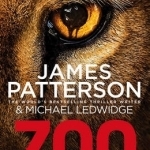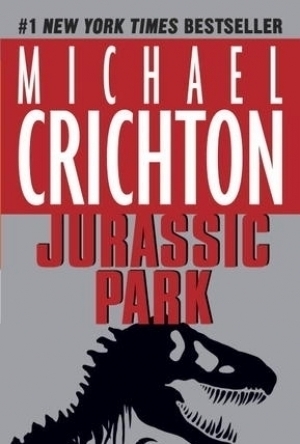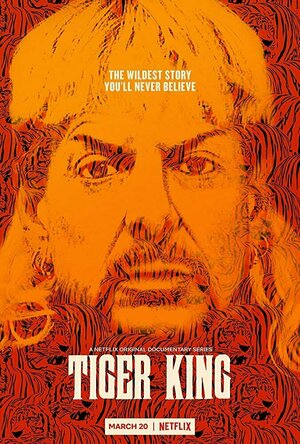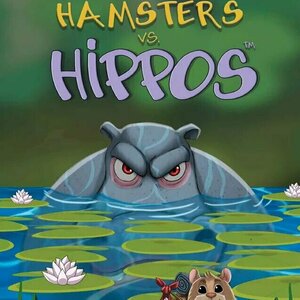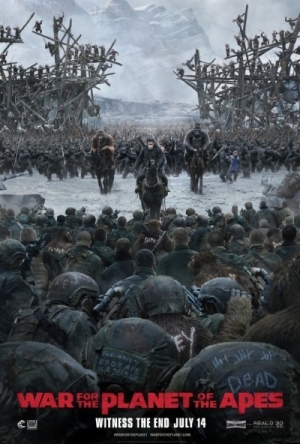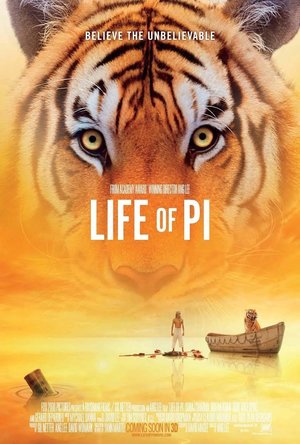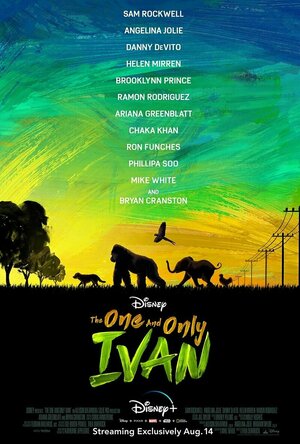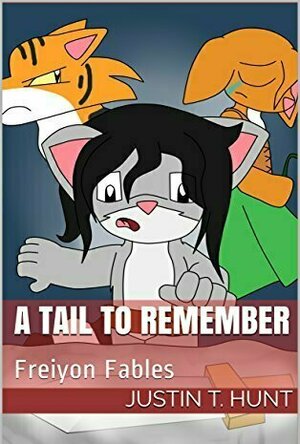Search
Search results
Sean Farrell (9 KP) rated Zoo in Books
Mar 15, 2018
Working in a library it's hard not to notice how popular (and prolific) James Patterson is. While I was skeptical of just how good anything could be when it's written by someone who spits out books at a dizzying pace, and who is probably handing much of the actual writing off to one of the other authors he seems to employ, I still figured at some point I should read something of his just to see what I thought. Being a completely standalone story, and of somewhat more interest to me than his typical "murder-of-the-month" fare, "Zoo" seemed like a good way to dip my toes in the water. It tells the story of the world's population falling victim to an uprising of animal violence and the scientist who is trying to warn everybody of the coming problem and its cause. It's a somewhat simple story, but it's told briskly and has a number of memorably suspenseful scenes. The science behind everything sounds relatively plausible, whether or not it really is I couldn't tell you, though I have my doubts. Either way, it was good enough to sell the rather dire and dramatic circumstances that unfold over the course of the novel. The characters are likable enough, but don't really feel all that fleshed out. On some other negative notes; the dialogue is sometimes quite bad and there are too many times where people make horrifically stupid decisions for reasons that I found it hard to believe would have been enough to get them to make them. That aside, it was fast paced and suspenseful enough to keep me reading. The short chapters make it feel like it's propelling along at a higher speed, even if it does seem like some sequences were ended too abruptly, negating any chance of building up real suspense. The end in particular, while logical to the story, felt pretty abrupt and left me feeling just a little unsatisfied. I enjoyed reading Mr. Patterson more than I expected I might, but I don't know that I'll be coming back for more any time soon.
Marylegs (44 KP) rated Jurassic Park (Jurassic Park, #1) in Books
Aug 14, 2019
Jurassic Park is the first book in a two part saga written by Michael Crichton, it become one of the most iconic films of the 90’s. Those who have seen the film know that the story revolves around a biotechnology company experimenting with genetics and DNA reconstruction to create dinosaurs in the modern world. On an island off of Costa Rica, these Dinosaurs are being contained in what is being heralded as the zoo of the future. The scientists have managed through DNA extraction and reconstruction to produce 15 different species of extinct Dinosaurs. To test out the park some renowned academics including Dr Grant, palaeontology, Dr Sattler, palaeobotany and Ian Malcom a chaos theory mathematician, are invited to the park. This obviously ambitious leap in technology and questionable ethics runs into some trouble and obviously this has catastrophic consequences.
Never, have I ever, put off reading a book so much as this one. At the very beginning of the year I decided to randomly choose books to read to really push me out of my comfort zone. But, every time I looked at this list I had created I would choose something else. I was avoiding this book, not only because the film was so iconic to my childhood but also I didn’t know if it would be the sort of book I would enjoy to read.
All I can say is, bravo. This book was brilliant. I honestly didn’t want it to end. I loved everything. I didn’t even mind Malcom’s rants on chaos theory, I actually rather enjoyed them and found them thought provoking. I really liked that it was close enough to the film that I could follow what I already knew. But there is so much more to this story. There are obviously fictional elements included regarding the behaviour and activities related to the dinosaurs, but there was obviously a lot of research undertaking when the book was written so I believe the artistic licence is warranted. I loved the differences and I will definitely now read the sequel and these books will be placed into my exclusive re-read rotation.
Never, have I ever, put off reading a book so much as this one. At the very beginning of the year I decided to randomly choose books to read to really push me out of my comfort zone. But, every time I looked at this list I had created I would choose something else. I was avoiding this book, not only because the film was so iconic to my childhood but also I didn’t know if it would be the sort of book I would enjoy to read.
All I can say is, bravo. This book was brilliant. I honestly didn’t want it to end. I loved everything. I didn’t even mind Malcom’s rants on chaos theory, I actually rather enjoyed them and found them thought provoking. I really liked that it was close enough to the film that I could follow what I already knew. But there is so much more to this story. There are obviously fictional elements included regarding the behaviour and activities related to the dinosaurs, but there was obviously a lot of research undertaking when the book was written so I believe the artistic licence is warranted. I loved the differences and I will definitely now read the sequel and these books will be placed into my exclusive re-read rotation.
LeftSideCut (3776 KP) rated Tiger King: Murder, Mayhem and Madness in TV
Mar 31, 2020 (Updated Mar 31, 2020)
Tiger King is a true story. That in itself is an absurd thought. The story of Joe Exotic and his self built zoo, housing no less than 227 live tigers is something I never knew I wanted to hear until it was too late.
This well put together documentary took approximately 15 minutes to draw me in, and before I knew it, I had watched the whole thing.
The story in question revolves around Joe's constant rivalry and back-and-forth lawsuits with Carole Baskin, and her Big Cat Rescue sanctuary. It doesn't take long for everything to escalate to dangerous silliness, and the show documents Joe's eventual incarceration, where he is still residing currently.
This deep look into this cult like practice is fascinating to say the least. Some, including me, will argue that wild animals bred in captivity purely for profit is cruel, but it's genuinely difficult to see Joe Exotic as a bad person. His heart seems in the right place, and its sad to see him get so caught up in the money side of things, to the point where his intentions start to stray.
On the flip side, Carole Baskin on the surface doesn't agree with these kind of zoos and aims to rescue these animals, but in reality, she is still turning profit and her sanctuary is arguably just as bad.
These characters that we meet throughout all have layers and secrets, and ensures that the narrative being told through archive footage and interviews never stops throwing curve balls, as what starts as an animal park feud, devolves into embezzlement, attempted murder, suicide, missing persons, million-dollar legal battles... It's honestly hectic.
I'm incredibly interested to see what happens as a result of this series, and I personally don't think Joe will be incarcerated for too much longer.
The limited series could have benefited from losing an episode I feel, as it did drag a little towards the end, but overall, Tiger King is a fantastic documentary that's edited and put together to draw you in, and not let go.
This well put together documentary took approximately 15 minutes to draw me in, and before I knew it, I had watched the whole thing.
The story in question revolves around Joe's constant rivalry and back-and-forth lawsuits with Carole Baskin, and her Big Cat Rescue sanctuary. It doesn't take long for everything to escalate to dangerous silliness, and the show documents Joe's eventual incarceration, where he is still residing currently.
This deep look into this cult like practice is fascinating to say the least. Some, including me, will argue that wild animals bred in captivity purely for profit is cruel, but it's genuinely difficult to see Joe Exotic as a bad person. His heart seems in the right place, and its sad to see him get so caught up in the money side of things, to the point where his intentions start to stray.
On the flip side, Carole Baskin on the surface doesn't agree with these kind of zoos and aims to rescue these animals, but in reality, she is still turning profit and her sanctuary is arguably just as bad.
These characters that we meet throughout all have layers and secrets, and ensures that the narrative being told through archive footage and interviews never stops throwing curve balls, as what starts as an animal park feud, devolves into embezzlement, attempted murder, suicide, missing persons, million-dollar legal battles... It's honestly hectic.
I'm incredibly interested to see what happens as a result of this series, and I personally don't think Joe will be incarcerated for too much longer.
The limited series could have benefited from losing an episode I feel, as it did drag a little towards the end, but overall, Tiger King is a fantastic documentary that's edited and put together to draw you in, and not let go.
Debbiereadsbook (1444 KP) rated Saving What's Mine (Men of Maddox Security #2) in Books
Apr 3, 2025
loving these group of men and the women who fall for them!
Independent reviewer for BookSirens, I was gifted my copy of this book.
This is book 2 in the Men of Maddox Security series, but it's not necessary to read book 1 first. They can be read as a stand alone. A note though, the first chapter of this book is the same as the first in all the books, just from each guy's point of view. But the note at the front of THIS book, says that it's Ranger who has a point of view, and his book was first. So, maybe that note needs changing for each book. You might not notice it, but I did!
Orion is tasked with keeping Briar safe until a restraining order is obtained against her ex who is becoming dangerous. Seeing her picture, and Orion's world shifts. But can he keep her safe? And her parrot, Jeb?
I found this a bit darker read than book, but no less engaging and I thoroughly enjoyed it!
While Orion has instant and immediately attraction to Briar, he knows that he cannot cross that line. Briar's attraction to Orion takes a little bit of time (but not noo long!) but given what her ex kept telling her, she is wary. She keeps comparing them, but very quickly learns they are miles apart. I like that it took a little time for them to act on it.
I loved Jeb, Briar's parrot. He does get up to mischief, but he does let Orion know when Briar does what she does.
Steamy, oh yes. But I thought the emotional connection was more pronounced here than in book 1.
I'm still a little confused as to what the ex wanted with the star parrot from the zoo, though!
I liked how we caught up with Ranger and Tori from book one. And I still NEEEEEEEEEEEEED to read Dean's book!
Creeping up a bit to 4.5 stars, cos of that emotional connection but rounded down to 4 for the purpose of the review, since I can't do half stars.
*same worded review will appear elsewhere
This is book 2 in the Men of Maddox Security series, but it's not necessary to read book 1 first. They can be read as a stand alone. A note though, the first chapter of this book is the same as the first in all the books, just from each guy's point of view. But the note at the front of THIS book, says that it's Ranger who has a point of view, and his book was first. So, maybe that note needs changing for each book. You might not notice it, but I did!
Orion is tasked with keeping Briar safe until a restraining order is obtained against her ex who is becoming dangerous. Seeing her picture, and Orion's world shifts. But can he keep her safe? And her parrot, Jeb?
I found this a bit darker read than book, but no less engaging and I thoroughly enjoyed it!
While Orion has instant and immediately attraction to Briar, he knows that he cannot cross that line. Briar's attraction to Orion takes a little bit of time (but not noo long!) but given what her ex kept telling her, she is wary. She keeps comparing them, but very quickly learns they are miles apart. I like that it took a little time for them to act on it.
I loved Jeb, Briar's parrot. He does get up to mischief, but he does let Orion know when Briar does what she does.
Steamy, oh yes. But I thought the emotional connection was more pronounced here than in book 1.
I'm still a little confused as to what the ex wanted with the star parrot from the zoo, though!
I liked how we caught up with Ranger and Tori from book one. And I still NEEEEEEEEEEEEED to read Dean's book!
Creeping up a bit to 4.5 stars, cos of that emotional connection but rounded down to 4 for the purpose of the review, since I can't do half stars.
*same worded review will appear elsewhere
Purple Phoenix Games (2266 KP) rated Hamsters vs. Hippos in Tabletop Games
Oct 1, 2021
Deeply consider this question: what is your natural predator? We are the top of the food chain, right? Right? And what we all learned in school is that some animals are herbivores, some are carnivores, and some are omnivores. At least in the Midwest, that’s what we were taught. Now, I don’t remember ever being taught that hippopotamuses (hippopotami?) eat anything other than grass. However, I have been wrong so many times in my life that I am interested to find out why they would snack on fleeing hamsters. Perhaps a board game can help me!
Hamsters vs. Hippos is a press-your-luck tile flipping game where players are cute little hamsterinos escaping the zoo and nearing freedom. However, along the way they must traverse the hippo enclosure. Typically hippos only eat grass, but in this game universe they are attracted to the delectable little rodents and are as hangry as my kids after a day at the playground. The hamster who can collect the most lotus flowers from the hippo lily pads at the end of the game will be the winner and be able to escape the zoo in peace. All other players will be snacked.
DISCLAIMER: We were provided a copy of this game for the purposes of this review. This is a retail copy of the game, so what you see in these photos is exactly what would be received in your box. I do not intend to cover every single rule included in the rulebook, but will describe the overall game flow and major rule set so that our readers may get a sense of how the game plays. For more in depth rules, you may purchase a copy online or from your FLGS. -T
To setup, determine the appropriate grid size for the number of players per the rulebook. Shuffle all the lily pad tiles face-down, place them in the grid, then place upon them nine lotus flower tokens. Each player will select their hamsteeple and mat and the game may now begin!
Hamsters vs. Hippos is played over four rounds and each turn players will have two actions they must complete. For the first action, each hamster must move onto the grid to explore a face-down tile, or explore another face-down tile if already on the grid. For the second action the hamster may continue exploring new tiles or be taken off the grid to score their collected lotus flowers. Movement can be orthogonally or diagonally, but every time they move, the hamsters must move to an unexplored tile. Flipping these tiles will reveal empty lily pads, some special actions to be taken, lotus flowers to be collected, or hippos that end the hamster’s round and makes the hamster forfeit their collected lotus flowers this round.
The game continues in this fashion over four rounds where hamsters are moving onto and off the grid, moving around the grid, collecting flowers, and possibly being eaten. At the end of the fourth round players total their lotus flowers they were able to keep and the hamster with the most lotus flowers wins!
Components. This one is easy. This game is a bunch of lily pad tiles, some cardstock player mats, wooden lotus flower tokens, and cute little hamsteeples. The tiles are good quality, the player mats are big and nice, and the hamsteeples are precious. I enjoy the lighthearted art style quite a bit – even the angry-looking hippo tiles. My only issue lies with the lotus flower tokens. They are very thin painted wooden tokens in two colors – pastel pink (worth 1 VP)and slightly darker pastel purple (worth 3 VP). I am not colorblind, but I like to make mention of items I would think are not colorblind friendly. The difference in color is not great enough, even for me of acceptable color differentiation. Another thing about these is they are very thin and delicate. Normally this isn’t an issue for me, but this is clearly a game my children want to play. When they play this with me I am always holding my breath just waiting for them to break a lotus flower. It hasn’t happened yet, but I might see about adding sturdier components to my copy when I play with little ones.
Game play is very very light. This is purely a press-your-luck game of deciding to move to a tile, flipping it over, and hoping for the best. There are a few special action tiles that can help mitigate the luck factor a little, but most of the time it’s a leap before you look scenario. That may turn off a large faction of gamers, but I will be playing this primarily with my children (who are nowhere near the suggested age of 8+). I could have reviewed this under our Kids Table series, but it doesn’t seem to be marketed specifically to children. As a game for adults, this is novelty at best, but for children it’s a decent press-your-luck style game. Purple Phoenix Games gives this one a 4 / 6, but only because it works so well with kids. If I didn’t have children I couldn’t see myself playing it a whole lot at all. Consider this when you look at the amazing cover art and intriguing theme. It’s good for what it is, but will not be for all collections and play groups.
Hamsters vs. Hippos is a press-your-luck tile flipping game where players are cute little hamsterinos escaping the zoo and nearing freedom. However, along the way they must traverse the hippo enclosure. Typically hippos only eat grass, but in this game universe they are attracted to the delectable little rodents and are as hangry as my kids after a day at the playground. The hamster who can collect the most lotus flowers from the hippo lily pads at the end of the game will be the winner and be able to escape the zoo in peace. All other players will be snacked.
DISCLAIMER: We were provided a copy of this game for the purposes of this review. This is a retail copy of the game, so what you see in these photos is exactly what would be received in your box. I do not intend to cover every single rule included in the rulebook, but will describe the overall game flow and major rule set so that our readers may get a sense of how the game plays. For more in depth rules, you may purchase a copy online or from your FLGS. -T
To setup, determine the appropriate grid size for the number of players per the rulebook. Shuffle all the lily pad tiles face-down, place them in the grid, then place upon them nine lotus flower tokens. Each player will select their hamsteeple and mat and the game may now begin!
Hamsters vs. Hippos is played over four rounds and each turn players will have two actions they must complete. For the first action, each hamster must move onto the grid to explore a face-down tile, or explore another face-down tile if already on the grid. For the second action the hamster may continue exploring new tiles or be taken off the grid to score their collected lotus flowers. Movement can be orthogonally or diagonally, but every time they move, the hamsters must move to an unexplored tile. Flipping these tiles will reveal empty lily pads, some special actions to be taken, lotus flowers to be collected, or hippos that end the hamster’s round and makes the hamster forfeit their collected lotus flowers this round.
The game continues in this fashion over four rounds where hamsters are moving onto and off the grid, moving around the grid, collecting flowers, and possibly being eaten. At the end of the fourth round players total their lotus flowers they were able to keep and the hamster with the most lotus flowers wins!
Components. This one is easy. This game is a bunch of lily pad tiles, some cardstock player mats, wooden lotus flower tokens, and cute little hamsteeples. The tiles are good quality, the player mats are big and nice, and the hamsteeples are precious. I enjoy the lighthearted art style quite a bit – even the angry-looking hippo tiles. My only issue lies with the lotus flower tokens. They are very thin painted wooden tokens in two colors – pastel pink (worth 1 VP)and slightly darker pastel purple (worth 3 VP). I am not colorblind, but I like to make mention of items I would think are not colorblind friendly. The difference in color is not great enough, even for me of acceptable color differentiation. Another thing about these is they are very thin and delicate. Normally this isn’t an issue for me, but this is clearly a game my children want to play. When they play this with me I am always holding my breath just waiting for them to break a lotus flower. It hasn’t happened yet, but I might see about adding sturdier components to my copy when I play with little ones.
Game play is very very light. This is purely a press-your-luck game of deciding to move to a tile, flipping it over, and hoping for the best. There are a few special action tiles that can help mitigate the luck factor a little, but most of the time it’s a leap before you look scenario. That may turn off a large faction of gamers, but I will be playing this primarily with my children (who are nowhere near the suggested age of 8+). I could have reviewed this under our Kids Table series, but it doesn’t seem to be marketed specifically to children. As a game for adults, this is novelty at best, but for children it’s a decent press-your-luck style game. Purple Phoenix Games gives this one a 4 / 6, but only because it works so well with kids. If I didn’t have children I couldn’t see myself playing it a whole lot at all. Consider this when you look at the amazing cover art and intriguing theme. It’s good for what it is, but will not be for all collections and play groups.
Hazel (1853 KP) rated The Panda Chronicles Coloring Book in Books
Dec 14, 2018
Review with image example can be found here: https://hazelstainer.wordpress.com/2016/07/15/who-says-pandas-are-black-and-white/
Who says pandas are all black and white?
Anne Belov is a satirical cartoonist with an obsession for pandas. She has published several books in <i>The Panda Chronicles</i> and has now produced a colouring book to go with the series. Pandas may seem like a peculiar subject for a colouring book since they are, as Belov puts it, “chromatically challenged,” however the world around them is bursting with different tints and shades.
The pandas featured in <i>The Panda Chronicles</i> are not the typical bears you might see in a zoo, or endangered in the wild. Anne Belov’s pandas get up to all sorts of mischief. In this colouring book you can expect to find pandas in all sorts of locations, wearing a variety of odd outfits, taking part in highly suspicious activities. So despite monochromatic fur, there is so much to add colour to.
<i>The Panda Chronicles Colouring Book</i> contains approximately 60 single sided illustrations. Although the paper feels quite thin, the lack of anything on the reverse means that it is safe to use any medium you wish to fill the drawing with colour.
Belov’s drawing approach is not the typical style of the hundreds of colouring books you see in stores – i.e. thick, precise lines and patterns. Belov sticks to her sketchy manner that she has used in all the chronicles thus far. In fact there is reason to believe (although do not quote this) that many of the illustrations are from the original books. While standing out in such a niche market, these particular pages may be more difficult to colour in. Some contain many scribbles rather than clear objects, however that does not detract from the overall fun guaranteed with this book.
Pandas in unconventional settings are a great cause for hilarity and satire. Not only is it funny that these bears are parodying human life, but the things they are up to are highly amusing. One particularly comical scene contains a mother panda telling her child off for being the cause of the <b>LEANING</b> Tower of Pisa, to which the youngster protests, “I didn’t do it! It was leaning when we got here!” The wittiness continues throughout the remainder of the book.
I bought this book hoping it would be suitable for my “pandamaniac” friend, who on occasion tells farcical stories about her (imaginary) friend <i>Miss Panda</i>. Anne Belov’s colouring book is the absolutely perfect present for her. It is almost as if the scenes are written/drawn about <i>Miss Panda</i> herself, despite the artist and my friend having never met… Unless… oh the horror! Maybe <i>Miss Panda</i> IS real!
Who says pandas are all black and white?
Anne Belov is a satirical cartoonist with an obsession for pandas. She has published several books in <i>The Panda Chronicles</i> and has now produced a colouring book to go with the series. Pandas may seem like a peculiar subject for a colouring book since they are, as Belov puts it, “chromatically challenged,” however the world around them is bursting with different tints and shades.
The pandas featured in <i>The Panda Chronicles</i> are not the typical bears you might see in a zoo, or endangered in the wild. Anne Belov’s pandas get up to all sorts of mischief. In this colouring book you can expect to find pandas in all sorts of locations, wearing a variety of odd outfits, taking part in highly suspicious activities. So despite monochromatic fur, there is so much to add colour to.
<i>The Panda Chronicles Colouring Book</i> contains approximately 60 single sided illustrations. Although the paper feels quite thin, the lack of anything on the reverse means that it is safe to use any medium you wish to fill the drawing with colour.
Belov’s drawing approach is not the typical style of the hundreds of colouring books you see in stores – i.e. thick, precise lines and patterns. Belov sticks to her sketchy manner that she has used in all the chronicles thus far. In fact there is reason to believe (although do not quote this) that many of the illustrations are from the original books. While standing out in such a niche market, these particular pages may be more difficult to colour in. Some contain many scribbles rather than clear objects, however that does not detract from the overall fun guaranteed with this book.
Pandas in unconventional settings are a great cause for hilarity and satire. Not only is it funny that these bears are parodying human life, but the things they are up to are highly amusing. One particularly comical scene contains a mother panda telling her child off for being the cause of the <b>LEANING</b> Tower of Pisa, to which the youngster protests, “I didn’t do it! It was leaning when we got here!” The wittiness continues throughout the remainder of the book.
I bought this book hoping it would be suitable for my “pandamaniac” friend, who on occasion tells farcical stories about her (imaginary) friend <i>Miss Panda</i>. Anne Belov’s colouring book is the absolutely perfect present for her. It is almost as if the scenes are written/drawn about <i>Miss Panda</i> herself, despite the artist and my friend having never met… Unless… oh the horror! Maybe <i>Miss Panda</i> IS real!
Lee (2222 KP) rated War for the Planet of the Apes (2017) in Movies
Jul 19, 2017
Strong ending to a fantastic trilogy
Finally, after a recent lengthy spell of average or just plain disappointing blockbusters, along comes War for the Planet of the Apes to show them how it's done. The first two movies in this new trilogy have been consistently strong and enjoyable and War continues to deliver on that high quality, proving itself to be the best of the trilogy.
Despite it's name, there's not really a huge amount of war on show here. Unless of course we're referring to the inner conflict and turmoil experienced by Caesar. The movie begins with some human soldiers sneaking through the woods to try and take out the apes. They get their asses kicked and Caesar lets a few of them go in the hope that their crazed colonel (Woody Harrelson) will see just how merciful the apes are and understand that they just want to live their lives in peace and harmony. Unfortunately, things don't quite go to plan and the colonel returns later that night with a surprise attack on the apes home while they're sleeping. Some heavy ape casualties are sustained, and Caesar is pissed. Grief stricken, and out for revenge, he wants to go in search of the colonel while the rest of the apes head off to a potential new home out in the desert.
From there our story shifts down a gear, as Caesar and a small number of his trusted allies set off on horseback to track down the colonel. By this point though, you've already forgotten that these are not real apes, such is the exceptional quality of the effects on display here. The emotions are all there and the detail is perfect, totally believable. To all intents and purposes, these are real apes, and what they're experiencing feels real.
Along the way they manage pick up a young orphan mute girl and a former zoo ape called 'Bad Ape', who manages to provide much of the scarce humour found throughout the movie. When they do find the colonel and his base, the movie becomes more a prisoner of war, great escape style story rather than all out war. Yet it still manages to be extremely intense, highly emotional and hugely enjoyable.
By now, Andy Serkis and his team of performers are experts at bringing these apes to life and Caesar has now developed further than any other character in the trilogy. Serkis portrays equal amounts of rage and compassion beautifully, aided by the pixel perfect rendering of Caesar. Harrelson is the only human of any real note here, despite the large number of human soldiers under his command, and he manages to bring just the right amount of intense crazy and depth to the role.
The trilogy comes to a pretty satisfying and emotional close, with potential for further Apes movies. Overall though this has proved to be one of the strongest trilogies I've seen in a long time.
Despite it's name, there's not really a huge amount of war on show here. Unless of course we're referring to the inner conflict and turmoil experienced by Caesar. The movie begins with some human soldiers sneaking through the woods to try and take out the apes. They get their asses kicked and Caesar lets a few of them go in the hope that their crazed colonel (Woody Harrelson) will see just how merciful the apes are and understand that they just want to live their lives in peace and harmony. Unfortunately, things don't quite go to plan and the colonel returns later that night with a surprise attack on the apes home while they're sleeping. Some heavy ape casualties are sustained, and Caesar is pissed. Grief stricken, and out for revenge, he wants to go in search of the colonel while the rest of the apes head off to a potential new home out in the desert.
From there our story shifts down a gear, as Caesar and a small number of his trusted allies set off on horseback to track down the colonel. By this point though, you've already forgotten that these are not real apes, such is the exceptional quality of the effects on display here. The emotions are all there and the detail is perfect, totally believable. To all intents and purposes, these are real apes, and what they're experiencing feels real.
Along the way they manage pick up a young orphan mute girl and a former zoo ape called 'Bad Ape', who manages to provide much of the scarce humour found throughout the movie. When they do find the colonel and his base, the movie becomes more a prisoner of war, great escape style story rather than all out war. Yet it still manages to be extremely intense, highly emotional and hugely enjoyable.
By now, Andy Serkis and his team of performers are experts at bringing these apes to life and Caesar has now developed further than any other character in the trilogy. Serkis portrays equal amounts of rage and compassion beautifully, aided by the pixel perfect rendering of Caesar. Harrelson is the only human of any real note here, despite the large number of human soldiers under his command, and he manages to bring just the right amount of intense crazy and depth to the role.
The trilogy comes to a pretty satisfying and emotional close, with potential for further Apes movies. Overall though this has proved to be one of the strongest trilogies I've seen in a long time.
Gareth von Kallenbach (980 KP) rated Life Of Pi (2012) in Movies
Aug 7, 2019
When I heard that one of my favorite books was being converted into a movie, I was a little skeptical. Add one of my favorite directors, Ang Lee, and my skepticism started to recede. As many know, Lee is renowned for his artistic vision and cinematography. I fell in love with his vision of “Sense and Sensibility,” “Crouching Tiger, Hidden Dragon,” and “Brokeback Mountain.” To me, if there was a director who could capture the beauty and imagery of this book, it was Lee.
The movie and the book are great parallels of one another. The story revolves around a young Indian boy named Piscine (“Pool” in French) who spent much of his youth in Pondicherry, a French colony of India. Much of the book, and movie, include flash-backs of Pi’s life in India – the ridicule of his name, his father’s ownership of a zoo, etc. When Pi and his family decide to move to Canada due to political concerns (the book covers much more of this, including Pi’s exploration of various spiritualties/religions), they are chartered on a ship. En route, they encounter a fierce storm which capsizes their vessel, leaving Pi on a lifeboat with a Bengal tiger, a hyena, an injured zebra, and an orangutan.
Being the only human on board with said animals, Pi naturally fears for his welfare. He observes the hyena killing the injured zebra and then turning on the orangutan. The orangutan, as one should note, cares for Pi in a very motherly fashion (remember that Pi’s whole family had drowned in the ship), and her death was very difficult for Pi to endure. Eventually, the hyena succumbs to death by the tiger. As further explained in the movie and novel, Pi names the tiger “Richard Parker” and the two of them set out to endure their lives aboard the ship in some strange sort of symbiotic relationship.
Lee’s vision transforms this novel into a brilliant masterpiece. Like “Crouching Tiger, Hidden Dragon,” you will be awed by the cinematography and artistic interpretation he presents. The young actors employed for the role of Pi (Gautam Belur, Ayush Tandon, Suraj Sharma & Irrfan Khan) are downright perfect and I particularly enjoyed Gerard Depardieu as the grizzled and difficult French cook (not a difficult stretch for him as one can imagine). Overall, as an avid lover of Yann Martel’s novel and Ang Lee’s work, I can say this is a beautiful movie and one many will enjoy (even if you haven’t read the novel – which you MUST do).
My only complaint is that while it is a beautiful representation of CGI technology, sometimes it looked a bit too manufactured and fantastical. Their work on the tiger, however, was downright genius (and I personally hate when they create CGI animals instead of working with the real thing – but in this instance it worked very well). The ending and symbolism of this work is what makes it truly a piece of art. If you’re a fan of “Inception” and “The Sixth Sense,” you will enjoy the twist at the end.
Overall, I think this is a lovely representation of the novel and a great movie all around. I highly suggest checking it out.
The movie and the book are great parallels of one another. The story revolves around a young Indian boy named Piscine (“Pool” in French) who spent much of his youth in Pondicherry, a French colony of India. Much of the book, and movie, include flash-backs of Pi’s life in India – the ridicule of his name, his father’s ownership of a zoo, etc. When Pi and his family decide to move to Canada due to political concerns (the book covers much more of this, including Pi’s exploration of various spiritualties/religions), they are chartered on a ship. En route, they encounter a fierce storm which capsizes their vessel, leaving Pi on a lifeboat with a Bengal tiger, a hyena, an injured zebra, and an orangutan.
Being the only human on board with said animals, Pi naturally fears for his welfare. He observes the hyena killing the injured zebra and then turning on the orangutan. The orangutan, as one should note, cares for Pi in a very motherly fashion (remember that Pi’s whole family had drowned in the ship), and her death was very difficult for Pi to endure. Eventually, the hyena succumbs to death by the tiger. As further explained in the movie and novel, Pi names the tiger “Richard Parker” and the two of them set out to endure their lives aboard the ship in some strange sort of symbiotic relationship.
Lee’s vision transforms this novel into a brilliant masterpiece. Like “Crouching Tiger, Hidden Dragon,” you will be awed by the cinematography and artistic interpretation he presents. The young actors employed for the role of Pi (Gautam Belur, Ayush Tandon, Suraj Sharma & Irrfan Khan) are downright perfect and I particularly enjoyed Gerard Depardieu as the grizzled and difficult French cook (not a difficult stretch for him as one can imagine). Overall, as an avid lover of Yann Martel’s novel and Ang Lee’s work, I can say this is a beautiful movie and one many will enjoy (even if you haven’t read the novel – which you MUST do).
My only complaint is that while it is a beautiful representation of CGI technology, sometimes it looked a bit too manufactured and fantastical. Their work on the tiger, however, was downright genius (and I personally hate when they create CGI animals instead of working with the real thing – but in this instance it worked very well). The ending and symbolism of this work is what makes it truly a piece of art. If you’re a fan of “Inception” and “The Sixth Sense,” you will enjoy the twist at the end.
Overall, I think this is a lovely representation of the novel and a great movie all around. I highly suggest checking it out.
Lee (2222 KP) rated The One and Only Ivan (2020) in Movies
Sep 2, 2020
Better than most CGI talking animal Disney movies
Originally scheduled for a cinematic release, but now arriving on Disney+ instead, The One and Only Ivan is the latest in a long line of stories involving CGI animals who can talk, banding together to outsmart us humans in order to escape captivity. Only this one is actually based on a true story.
There were no talking animals in the real version of events this is based on, but there was a silverback gorilla named Ivan,
Stolen as an infant from the rainforests of Congo and made to live in a tiny cage, while regularly putting on a show for visitors to a shopping centre for 27 years in total. This being a Disney movie though, the cruelty of that is glossed over somewhat, with funny animal friends with wacky voices aiming to brighten things up. Although, the message that his captivity was wrong is certainly there for all to see, and hopefully to be appreciated.
Bryan Cranston is Mack, the showman responsible for raising Ivan and making him a star, bristling when enthusiasm and “the show must go on” spirit, despite dwindling audiences and occasional animal illness. From flashbacks, it’s clear that Mack loves Ivan, his passion for raising him having cost him his marriage. But now that Ivan is the star of the show at the mini circus in the mall, complacency has set in, and Mack cannot see that all Ivan now truly wants is his freedom.
In an attempt to try and bring in the crowds, Mack brings in a baby elephant, which takes over top billing status from Ivan, much to his disappointment. Elderly elephant Stella (Angelina Jolie) takes the new baby under her wing, and during some late night storytelling sessions between the animals, we learn that Ivan had a sister back in the jungle, and was actually a budding artist, using mud to paint on rocks. When Julia, young daughter of one of the helping hands at the circus, gives Ivan some of her old crayons and finger paints, Ivan begins drawing again, and is soon moved back up to top billing in the show.
When I first saw the trailer for The One and Only Ivan, I was totally on board. That is, until the animals started talking. I thought the CGI remake of The Lion King last year was just terrible, and the Lady and the Tramp remake which landed on Disney+ earlier this year was even worse. Realistic looking animals simply cannot convey emotions like their traditionally animated counterparts, while retaining their realistic looks. But The One and Only Ivan thankfully feels so different, much better than those movies do. And a lot of that is down to the voice cast.
Sam Rockwell is Ivan. Perfectly cast, he brings a real much needed gravitas to the sombre silverback. Along with the stray dog (Danny DeVito) that visits Ivan’s cage and sleeps on his belly at night, they form a delightful double act, discussing freedom, and the fortunes of the circus. With a lot of time being spent with the animals in their cages, the movie does drag a little at times, but then maybe that’s the whole idea – portraying the solitude and boredom experienced when you do not have your freedom.
As if it wasn’t already clear enough, The One and Only Ivan nicely drives home the important message that animals really shouldn’t be kept in pokey cages for long periods of time, and certainly not for decades either. The end of the movie reminds us that Ivan’s story is actually based on truth, as we’re shown photos of the real Ivan, who stayed with a family before becoming a circus act. Seeing the photos of his eventual release to the vastly improved setting of Atlanta zoo, where he lived out the rest of his days, certainly proves to be very emotional, and a fitting end to a surprisingly enjoyable family movie.
There were no talking animals in the real version of events this is based on, but there was a silverback gorilla named Ivan,
Stolen as an infant from the rainforests of Congo and made to live in a tiny cage, while regularly putting on a show for visitors to a shopping centre for 27 years in total. This being a Disney movie though, the cruelty of that is glossed over somewhat, with funny animal friends with wacky voices aiming to brighten things up. Although, the message that his captivity was wrong is certainly there for all to see, and hopefully to be appreciated.
Bryan Cranston is Mack, the showman responsible for raising Ivan and making him a star, bristling when enthusiasm and “the show must go on” spirit, despite dwindling audiences and occasional animal illness. From flashbacks, it’s clear that Mack loves Ivan, his passion for raising him having cost him his marriage. But now that Ivan is the star of the show at the mini circus in the mall, complacency has set in, and Mack cannot see that all Ivan now truly wants is his freedom.
In an attempt to try and bring in the crowds, Mack brings in a baby elephant, which takes over top billing status from Ivan, much to his disappointment. Elderly elephant Stella (Angelina Jolie) takes the new baby under her wing, and during some late night storytelling sessions between the animals, we learn that Ivan had a sister back in the jungle, and was actually a budding artist, using mud to paint on rocks. When Julia, young daughter of one of the helping hands at the circus, gives Ivan some of her old crayons and finger paints, Ivan begins drawing again, and is soon moved back up to top billing in the show.
When I first saw the trailer for The One and Only Ivan, I was totally on board. That is, until the animals started talking. I thought the CGI remake of The Lion King last year was just terrible, and the Lady and the Tramp remake which landed on Disney+ earlier this year was even worse. Realistic looking animals simply cannot convey emotions like their traditionally animated counterparts, while retaining their realistic looks. But The One and Only Ivan thankfully feels so different, much better than those movies do. And a lot of that is down to the voice cast.
Sam Rockwell is Ivan. Perfectly cast, he brings a real much needed gravitas to the sombre silverback. Along with the stray dog (Danny DeVito) that visits Ivan’s cage and sleeps on his belly at night, they form a delightful double act, discussing freedom, and the fortunes of the circus. With a lot of time being spent with the animals in their cages, the movie does drag a little at times, but then maybe that’s the whole idea – portraying the solitude and boredom experienced when you do not have your freedom.
As if it wasn’t already clear enough, The One and Only Ivan nicely drives home the important message that animals really shouldn’t be kept in pokey cages for long periods of time, and certainly not for decades either. The end of the movie reminds us that Ivan’s story is actually based on truth, as we’re shown photos of the real Ivan, who stayed with a family before becoming a circus act. Seeing the photos of his eventual release to the vastly improved setting of Atlanta zoo, where he lived out the rest of his days, certainly proves to be very emotional, and a fitting end to a surprisingly enjoyable family movie.
Night Reader Reviews (683 KP) rated Freiyon Fables: A Tail to Remember in Books
Jan 9, 2020
Honest Review for Free Copy of Book
Freiyon Fables: Tail to Remember by Justin Hunt was a book that I could only compare to one other book and that would be Chronicles of Narnia by C. S. Lewis. The Prologue promises an amazing tale, yet I feel as if the book doesn't quite live up to it. So even though I compare it to Narnia in style it is nothing like it when it comes to the actual material. The complete book itself is separated into three smaller books (or parts) that is then spread out into chapters.
In A Tail to Remember a squirrel by the name of Micklang escapes from a zoo and in the process is electrocuted, giving his tail a lightning-bolt shape. He then falls into another world in an Alice in Wonderland – down the rabbit hole style. In this new world, Micklang receives dreams about his warrior-self telling hi how to become that version of himself. During his journey, Micklang makes some surprising new friends and is reunited with some he has met before in the human world. It is with these friends that Micklang travels this new world, mapping it out.
At one point Micklang comes across an island where his traveling companions are captured and must rescue them before their captors harm them. Then after abandoning ship in a bad storm Micklang finds himself on yet another island, but this one is home to only other lightning-tail animals. Towards the end, Micklang goes back to one of the first islands that he visited in this new world, now called Freiyon. It is there that Micklang and his friends fight in the first battle in a war between The Grabbers and King Karel. It is during this battle that Micklang’s story ends but it is not the end of the stories about Freiyon. This is because a little human boy is told about Freiyon by his mother and decides it is time for him to visit this land of talking animals.
What I liked best about this book is that it is a rare occasion when I can honestly say that the ending, specifically the Epilogue is my favorite part. The epilogue tied the entire story together with the prologue when frankly I originally was confused about how it all connected. This actually redeemed the entire book in some ways. What I did not like was that the talking animals and being in a different world or realm gave the book a Chronicles of Narnia feel. Normally that would be a good thing but in this case, the writing style felt simplified and rushed at the same time. Also, this book felt like it was intended for children up until book three. In Book Three: The Switch Between Stories the phrases “What the HELL” and “how the HELL” were both used and that doesn't feel kid-friendly.
It was hard for me to pick a target audience for this book. My best guess would be for early middle school students and late elementary students, age-wise anyway. This is because the length might make it difficult for some elementary students (and some parents may not be thrilled about all the violence, who knows). Yet the simplified writing style may (or may not) appeal to older readers. Most likely it would be dry and boring for anyone out of middle school. That being said I rate this book a 2 out of 4. This is because this story falls in that dangerous zone between being simple enough for young readers and having just enough detail to feel rushed. The action moves from one major event to another without much of a break in between yet the story is still interesting
https://www.facebook.com/nightreaderreviews
In A Tail to Remember a squirrel by the name of Micklang escapes from a zoo and in the process is electrocuted, giving his tail a lightning-bolt shape. He then falls into another world in an Alice in Wonderland – down the rabbit hole style. In this new world, Micklang receives dreams about his warrior-self telling hi how to become that version of himself. During his journey, Micklang makes some surprising new friends and is reunited with some he has met before in the human world. It is with these friends that Micklang travels this new world, mapping it out.
At one point Micklang comes across an island where his traveling companions are captured and must rescue them before their captors harm them. Then after abandoning ship in a bad storm Micklang finds himself on yet another island, but this one is home to only other lightning-tail animals. Towards the end, Micklang goes back to one of the first islands that he visited in this new world, now called Freiyon. It is there that Micklang and his friends fight in the first battle in a war between The Grabbers and King Karel. It is during this battle that Micklang’s story ends but it is not the end of the stories about Freiyon. This is because a little human boy is told about Freiyon by his mother and decides it is time for him to visit this land of talking animals.
What I liked best about this book is that it is a rare occasion when I can honestly say that the ending, specifically the Epilogue is my favorite part. The epilogue tied the entire story together with the prologue when frankly I originally was confused about how it all connected. This actually redeemed the entire book in some ways. What I did not like was that the talking animals and being in a different world or realm gave the book a Chronicles of Narnia feel. Normally that would be a good thing but in this case, the writing style felt simplified and rushed at the same time. Also, this book felt like it was intended for children up until book three. In Book Three: The Switch Between Stories the phrases “What the HELL” and “how the HELL” were both used and that doesn't feel kid-friendly.
It was hard for me to pick a target audience for this book. My best guess would be for early middle school students and late elementary students, age-wise anyway. This is because the length might make it difficult for some elementary students (and some parents may not be thrilled about all the violence, who knows). Yet the simplified writing style may (or may not) appeal to older readers. Most likely it would be dry and boring for anyone out of middle school. That being said I rate this book a 2 out of 4. This is because this story falls in that dangerous zone between being simple enough for young readers and having just enough detail to feel rushed. The action moves from one major event to another without much of a break in between yet the story is still interesting
https://www.facebook.com/nightreaderreviews
